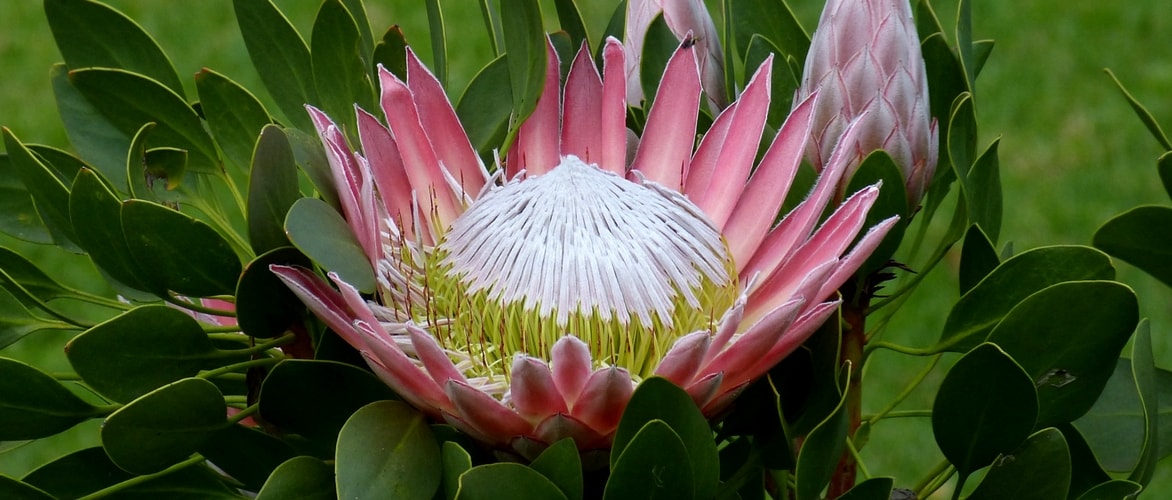
Plant and grow southern plants
our tips for succeeding
Contents
Southern plants are exotic plants adapted to hot and dry climates. Their foliage is often thick, colourful, and graphic. Originating from the southern hemisphere, the majority of them come from Australia, New Zealand, and South Africa. They allow for the creation of an exotic-style garden, which takes us on a journey! Moreover, this type of garden will not require much maintenance, as these plants are generally quite low-maintenance.
Which southern plants to choose?
Southern plants encompass a wide variety of species, as only climate and geographical origin connect them. They belong to different botanical families. Among them, there are numerous proteas (including Protea, Leucadendron or Grevillea) that offer spectacular flowerings, some agaves with very graphic foliage (Cordyline australis, Dasylirion…), or even South African bulbous plants (for example, Watsonia or Eucomis).
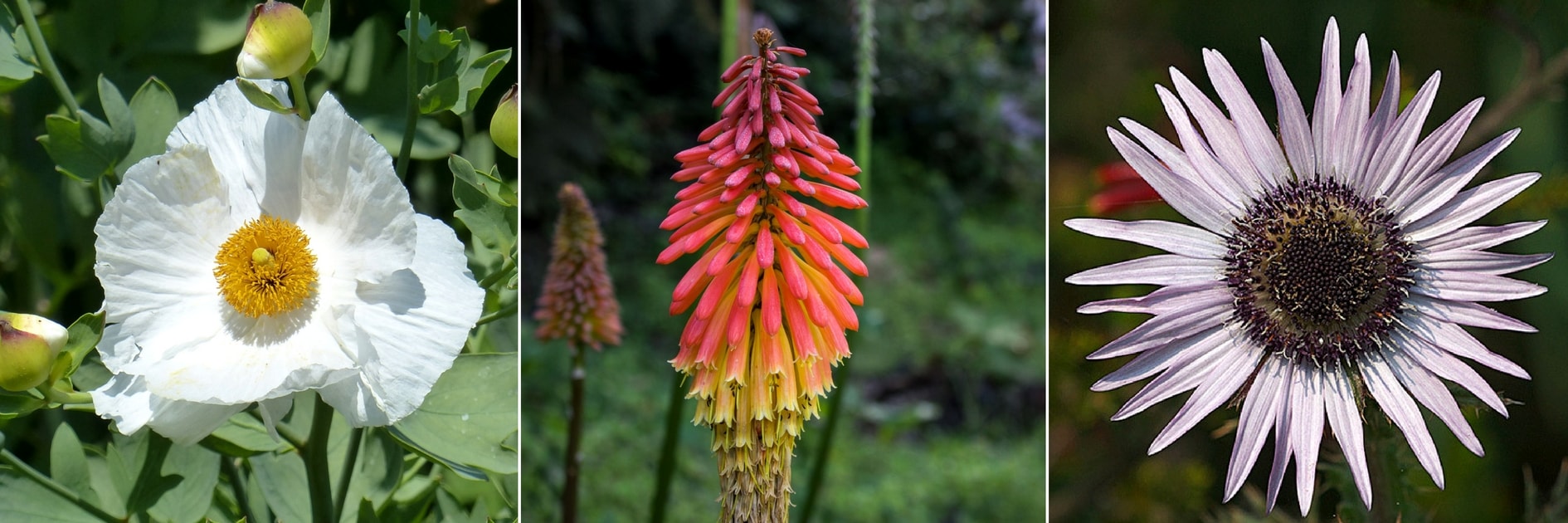
Romneya coulteri, Kniphofia and Berkheya purpurea
If you wish to enjoy an exceptional flowering, choose Kniphofias, the California Poppy (Romneya coulteri) or Dietes grandiflora… Not to mention Berkheya purpurea: a stunning South African thistle! Also enjoy the beautiful pink flowers of Anisodontea, a genus of shrubby mallow that offers abundant flowering from spring to autumn. Finally, be surprised by the flowering of Anigozanthos flavidus, a perennial that comes from southern Australia.
For graphic appeal, enjoy the long, thick foliage of cordylines, dasylirion or New Zealand Flax (Phormium tenax). Phormiums offer a beautiful diversity of foliage in warm and often variegated colours!
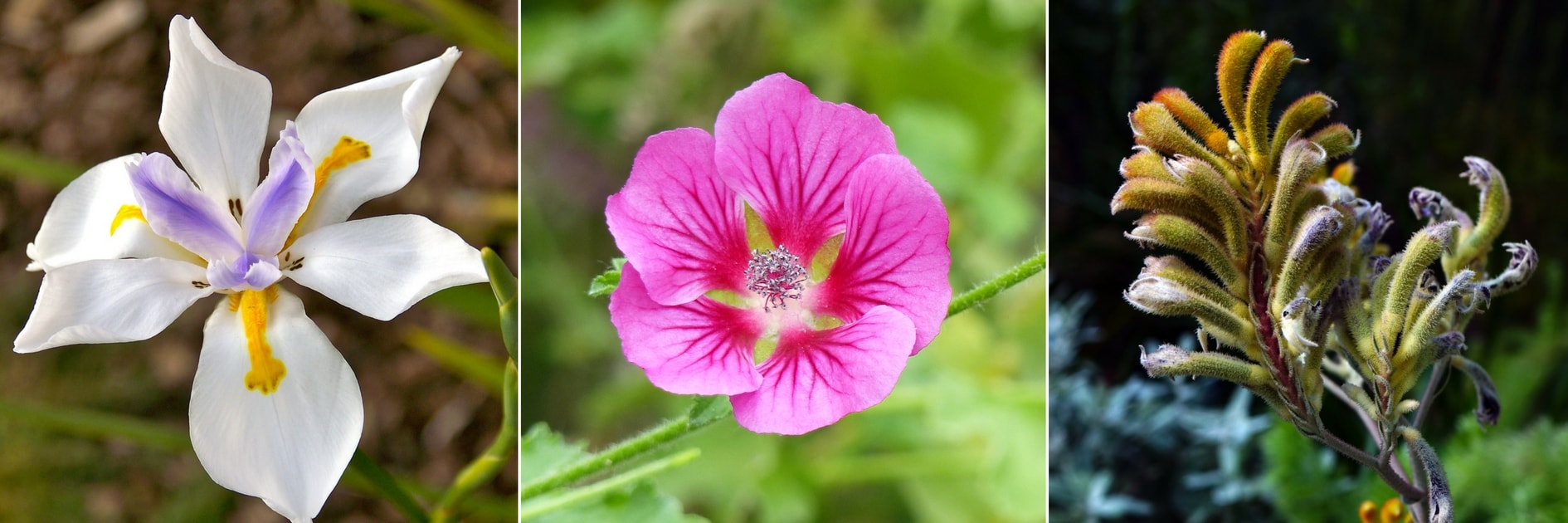
Dietes grandiflora, Anisodontea capensis ‘El Rayo’ and Anigozanthos
In terms of bushes, you can find callistemons (also known as bottlebrush) and grevillea, with their unique flowering, as well as the lesser-known Leptospermum or Drymis.
Read also
Rhodocoma : planting, growing and careWhere to plant your southern plants?
Growing naturally in a warm and dry climate, southern plants are ideal for coastal gardens. They appreciate mild winters and sunny exposures… They will thrive if you live by the Mediterranean! Ample sunlight will encourage their flowering. In harsher climates, some will need to be planted in pots and brought indoors for the winter… Check their hardiness! Place them in a situation protected from cold and prevailing winds.
They prefer poor and well-draining soils. If your soil retains moisture, do not hesitate to plant them on top of a mound, where moisture will be absent. Proteaceae prefer acidic soils, with a pH between 5.5 and 6.5. If you are growing them in pots, use a substrate composed of heather soil mixed with a bit of perlite or pine bark. Do not add fertiliser at planting, as this would harm the development of the plant. The substrate must be very well-draining to ensure good aeration of the roots and avoid stagnant moisture. Water as much as possible with rainwater.
How to plant southern plants?
- Dig a planting hole two to three times the size of the pot.
- If your soil is heavy, you can add gravel to lighten it. For proteaceae, mix heather soil with the planting substrate.
- Place your plant in the centre, and do not hesitate to slightly raise the collar to prevent water from pooling at this level.
- Fill in around the plant, then firm down and water.
- It is not necessary to add fertiliser at the time of planting.
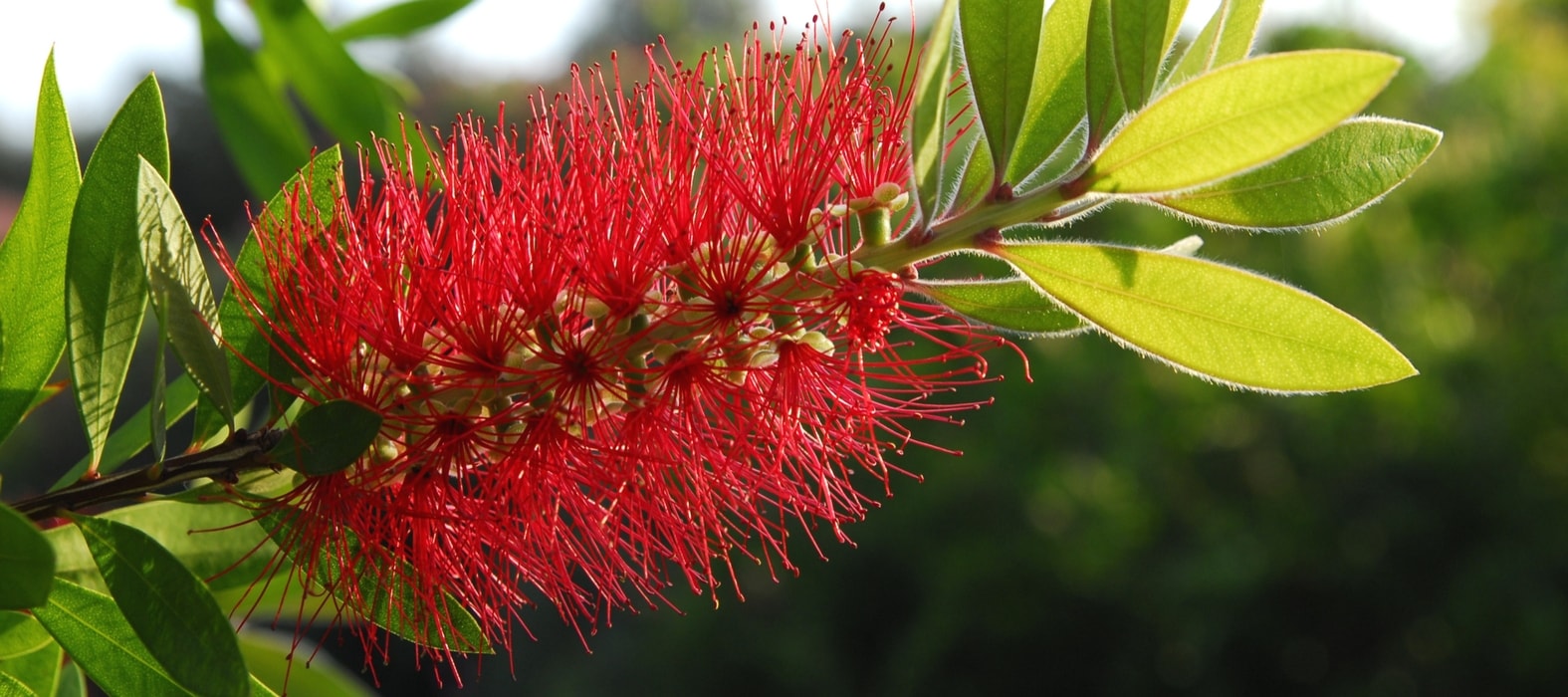
The inflorescence of a Callistemon or Bottlebrush.
Read also
Metrosideros: planting and growingAnd after ... ?
Accustomed to living in poor and dry soils, southern plants make do with little! They require very little maintenance and are not greedy for water or fertiliser. Bring the most sensitive ones indoors for winter in a cold greenhouse or a conservatory.
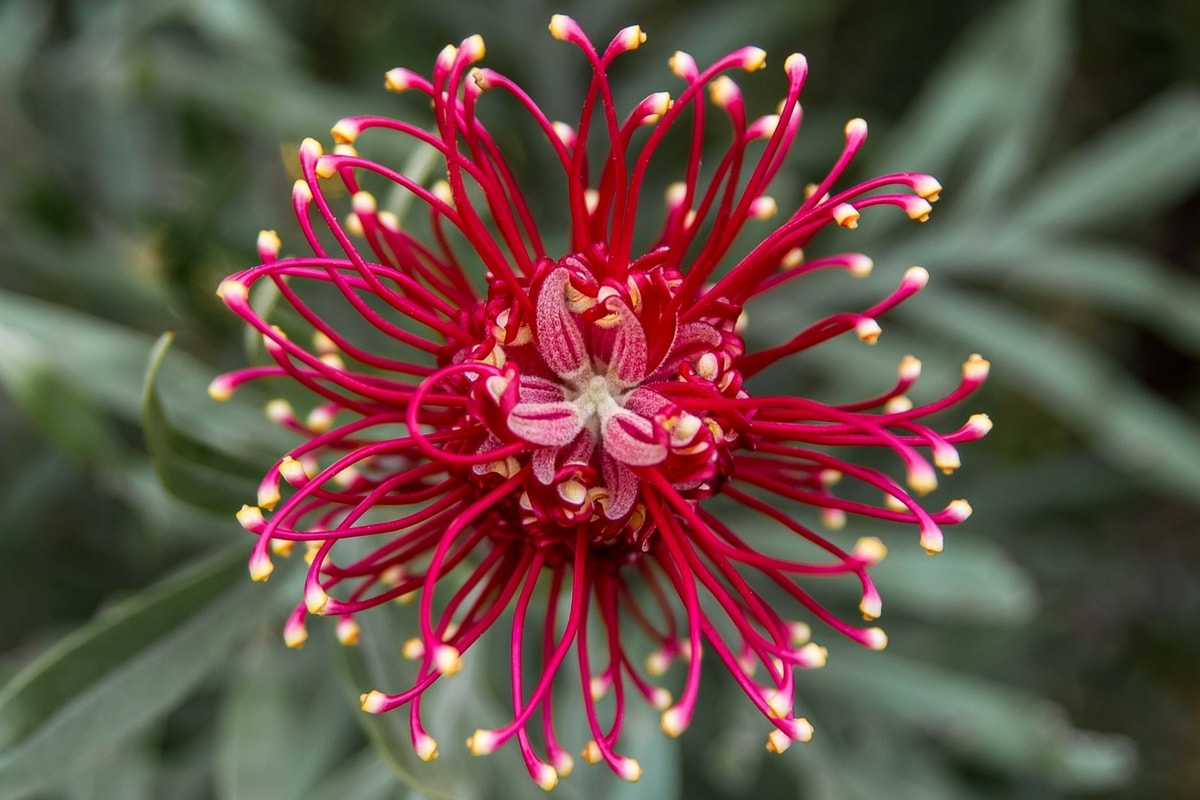
The inflorescence of a Grevillea!
- Subscribe!
- Contents






























